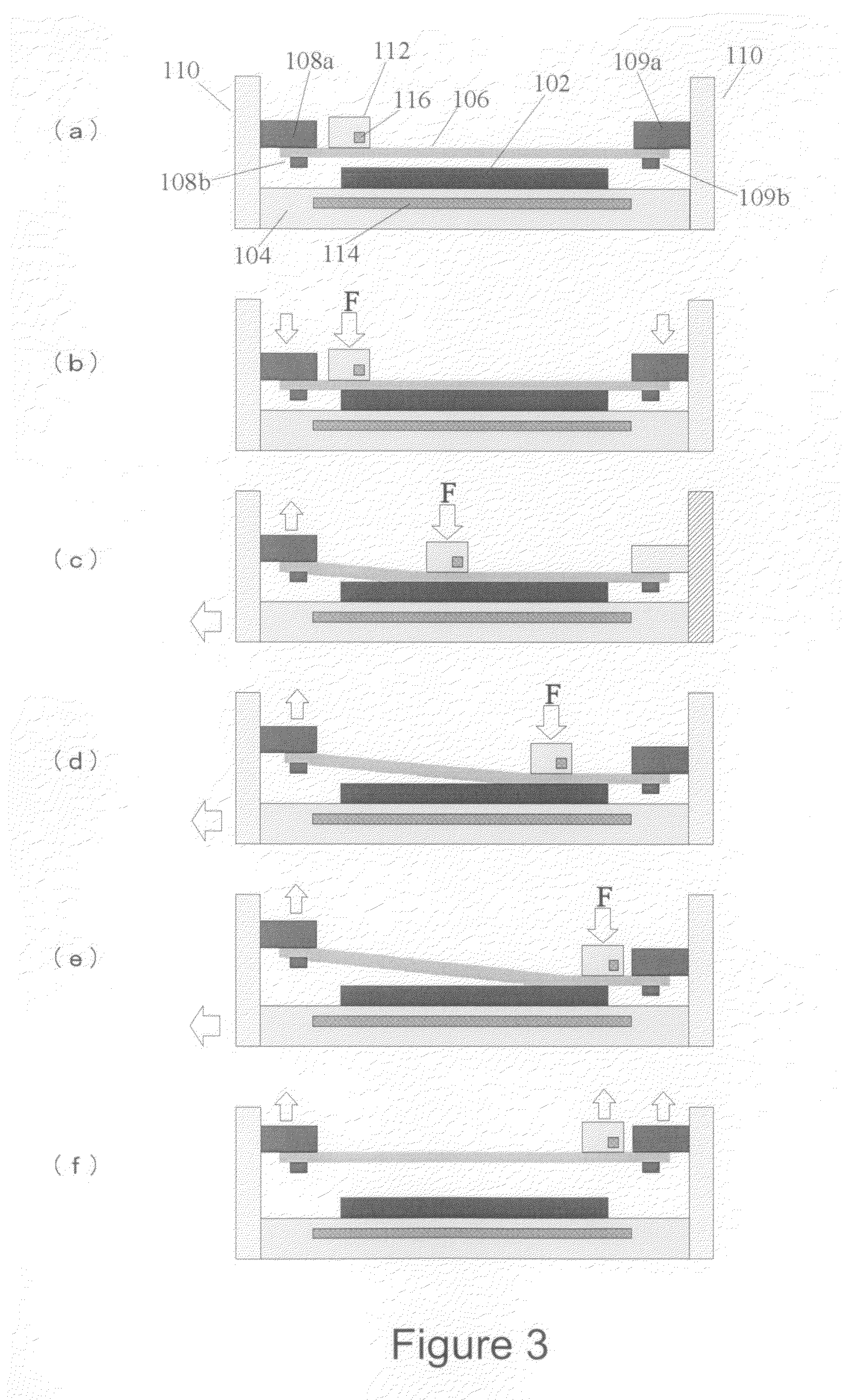Method and device for nano-imprinting
a nano-imprinting and nano-printing technology, applied in the field of nano-imprinting, can solve the problems of limited application range, mass productivity, and improved process throughput, and achieve the effects of large area, smooth release of molded objects, and large for
- Summary
- Abstract
- Description
- Claims
- Application Information
AI Technical Summary
Benefits of technology
Problems solved by technology
Method used
Image
Examples
Embodiment Construction
[0032]Preferred embodiments of the present invention will be described below with reference to attached drawings.
[0033]FIG. 2 is a conceptual diagram of a nanoimprint apparatus 100 according to the present invention. The nanoimprint apparatus 100 comprises a stage 104 for securing a workpiece substrate 102, a mold holding unit 108a, 108b, 109a, and 109b for securing a mold 106, a mold elevating mechanism 110 for elevating the mold 106 together with the mold holding units 108 and 109 and a head 112 for pressing the mold 106 against the workpiece material 102.
[0034]The nanoimprint apparatus 100 is capable of performing a nanoimprint on a large area by novel features provided by the present invention. In this embodiment, the nanoimprint molding area for the workpiece substrate 102 is 300×500 mm. Therefore, a large area plate mold is also used for the mold 106. Since the thickness of the mold 106 is preferably thin, considering easy mold release, the thinness of the mold is to be 200-30...
PUM
| Property | Measurement | Unit |
|---|---|---|
| Temperature | aaaaa | aaaaa |
| Force | aaaaa | aaaaa |
| Speed | aaaaa | aaaaa |
Abstract
Description
Claims
Application Information
 Login to View More
Login to View More - R&D
- Intellectual Property
- Life Sciences
- Materials
- Tech Scout
- Unparalleled Data Quality
- Higher Quality Content
- 60% Fewer Hallucinations
Browse by: Latest US Patents, China's latest patents, Technical Efficacy Thesaurus, Application Domain, Technology Topic, Popular Technical Reports.
© 2025 PatSnap. All rights reserved.Legal|Privacy policy|Modern Slavery Act Transparency Statement|Sitemap|About US| Contact US: help@patsnap.com



